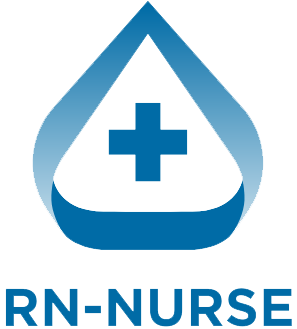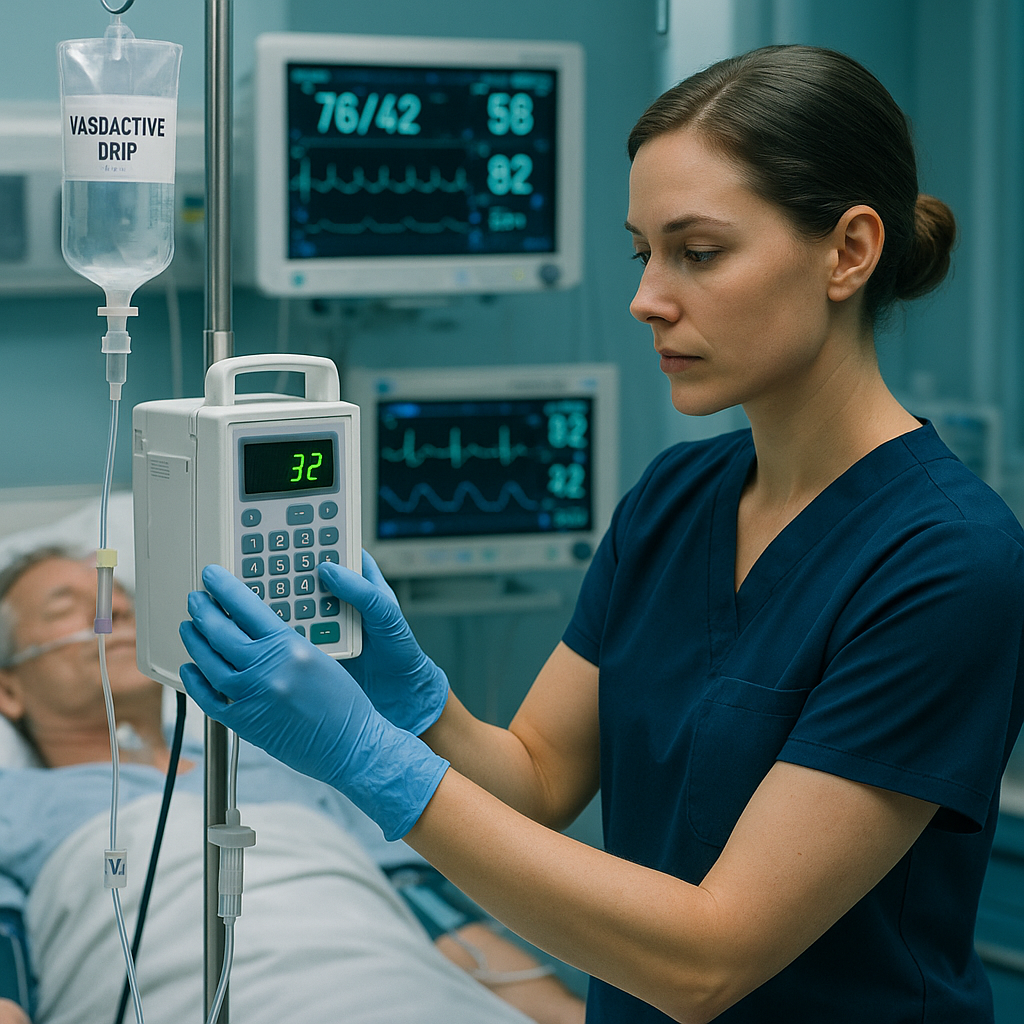Vasoactive Drips 101: Understanding Pressors and Titration
In critical care, every second matters—and so does every drop. Vasoactive drips are lifesaving infusions used to stabilize blood pressure and cardiac output in critically ill patients. Whether you’re an ICU nurse, a student, or a new grad entering acute care, understanding pressors and how to titrate them is essential to safe, effective patient care.
🔍 What Are Vasoactive Drips?
Vasoactive medications, commonly known as pressors, affect vascular tone, heart rate, and cardiac output. They are used in emergency and intensive care settings to treat conditions such as septic shock, cardiogenic shock, and neurogenic shock.
💉 Common Types of Vasoactive Pressors
- Norepinephrine (Levophed)
- First-line for septic shock
- Causes vasoconstriction, increasing blood pressure
- Epinephrine
- Useful in cardiac arrest and anaphylaxis
- Increases heart rate and contractility
- Dopamine
- Dose-dependent effects (renal perfusion, cardiac output, vasoconstriction)
- Phenylephrine
- Pure alpha agonist; boosts BP with minimal heart rate effect
- Vasopressin
- Works on different receptors; often added to norepinephrine
- Dobutamine
- Used in heart failure; increases cardiac output
🎯 Titration Basics
Titration refers to adjusting the infusion rate to meet clinical goals such as:
- MAP ≥ 65 mmHg
- Improved urine output
- Stable heart rate and rhythm
💡 Best Practice: Always start at the lowest dose and increase slowly, monitoring vitals every 5–15 minutes or per protocol.
🧠 Key Considerations When Using Pressors
- Always use a central line for vasoactive medications (except in emergencies).
- Monitor for extravasation and have antidotes like phentolamine on hand.
- Document dose changes, vital signs, and clinical response meticulously.
📊 Protocols and Safety
- Follow your institution’s titration protocols strictly.
- Know the maximum doses and when to notify the provider.
- Stay alert to side effects like arrhythmias, ischemia, and reflex bradycardia.
👩⚕️ Who Needs to Know This?
This knowledge is vital for:
- Critical care nurses
- Emergency nurses
- New grad RNs in ICU
- Advanced practice registered nurses (APRNs) and clinical nurse specialists
📌 Final Thoughts
Vasoactive drips can mean the difference between life and death. By mastering how to use and titrate pressors, you become a vital advocate for patient care in high-pressure environments. Keep learning, ask questions, and never hesitate to speak up for safety.

